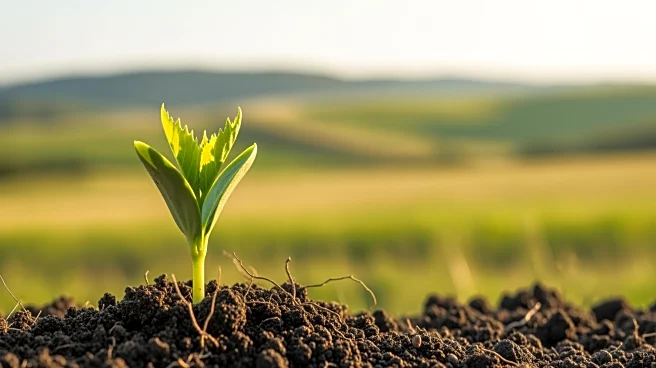What's Happening?
The food industry is set to embrace vibrant color trends in 2026, with a focus on yellows, oranges, deep purples, jewel tones, and earthy blues and greens. These colors are expected to reflect consumer
desires for warmth, wellbeing, and unusual appeal. Turquoise is emerging as a calming color linked to mental balance, while burgundy signals vitality and health. In the U.S., earthy blues and greens are gaining attention despite challenges in natural sourcing. These colors are anticipated to be prominent in beverages and food service, as they offer eye-catching appeal without being overly bright.
Why It's Important?
The shift towards vibrant and unusual color palettes in the food industry highlights changing consumer preferences. As consumers increasingly seek products that offer emotional comfort and wellbeing, colors like yellow and orange are associated with health benefits such as heart health and cognitive support. The focus on earthy blues and greens in the U.S. reflects a growing interest in natural and authentic food experiences. This trend could influence product development and marketing strategies, as companies aim to align with consumer desires for visually appealing and health-oriented products.
What's Next?
Manufacturers and food service providers are likely to incorporate these color trends into their offerings, potentially leading to new product launches and marketing campaigns. The emphasis on natural sourcing may drive innovation in ingredient development, as companies seek to create vibrant colors from natural sources. As these trends gain traction, they could impact consumer purchasing decisions and shape the competitive landscape in the food industry.
Beyond the Headlines
The adoption of vibrant color trends in the food industry may also have cultural implications, as colors are often linked to emotional and psychological responses. The focus on colors that evoke calmness and vitality could reflect broader societal shifts towards mindfulness and active lifestyles. Additionally, the challenge of sourcing natural colors may prompt discussions on sustainability and ethical sourcing practices.











